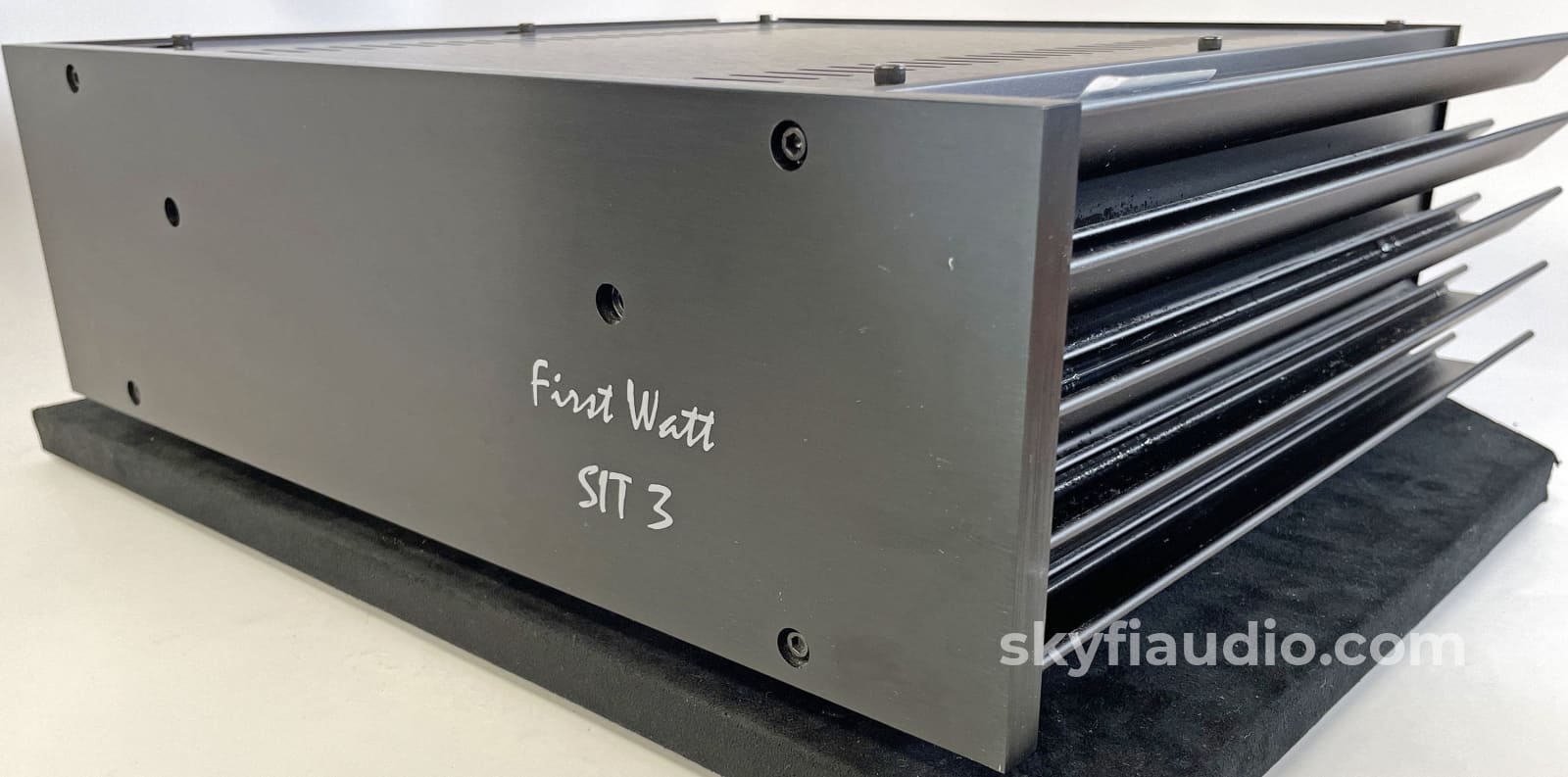
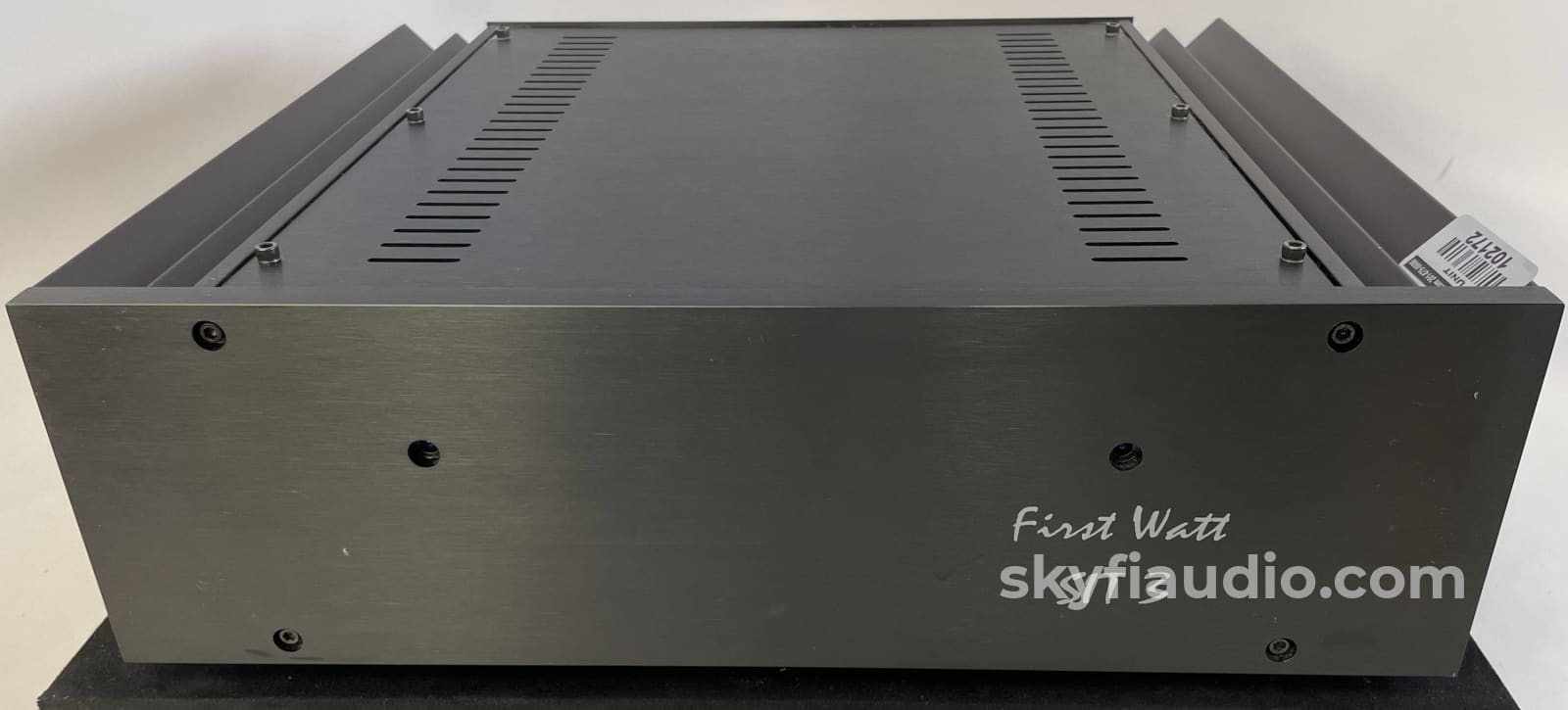

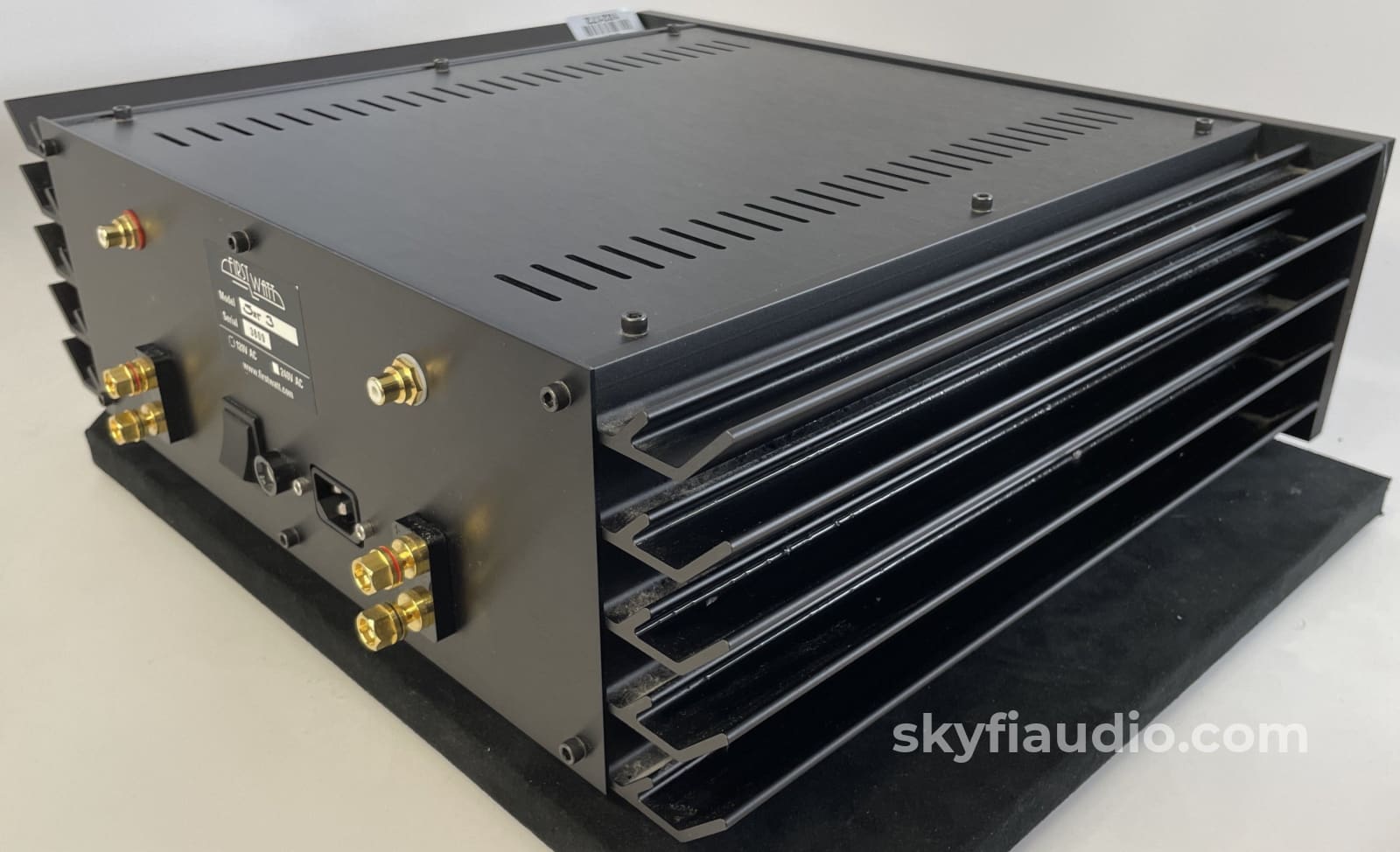
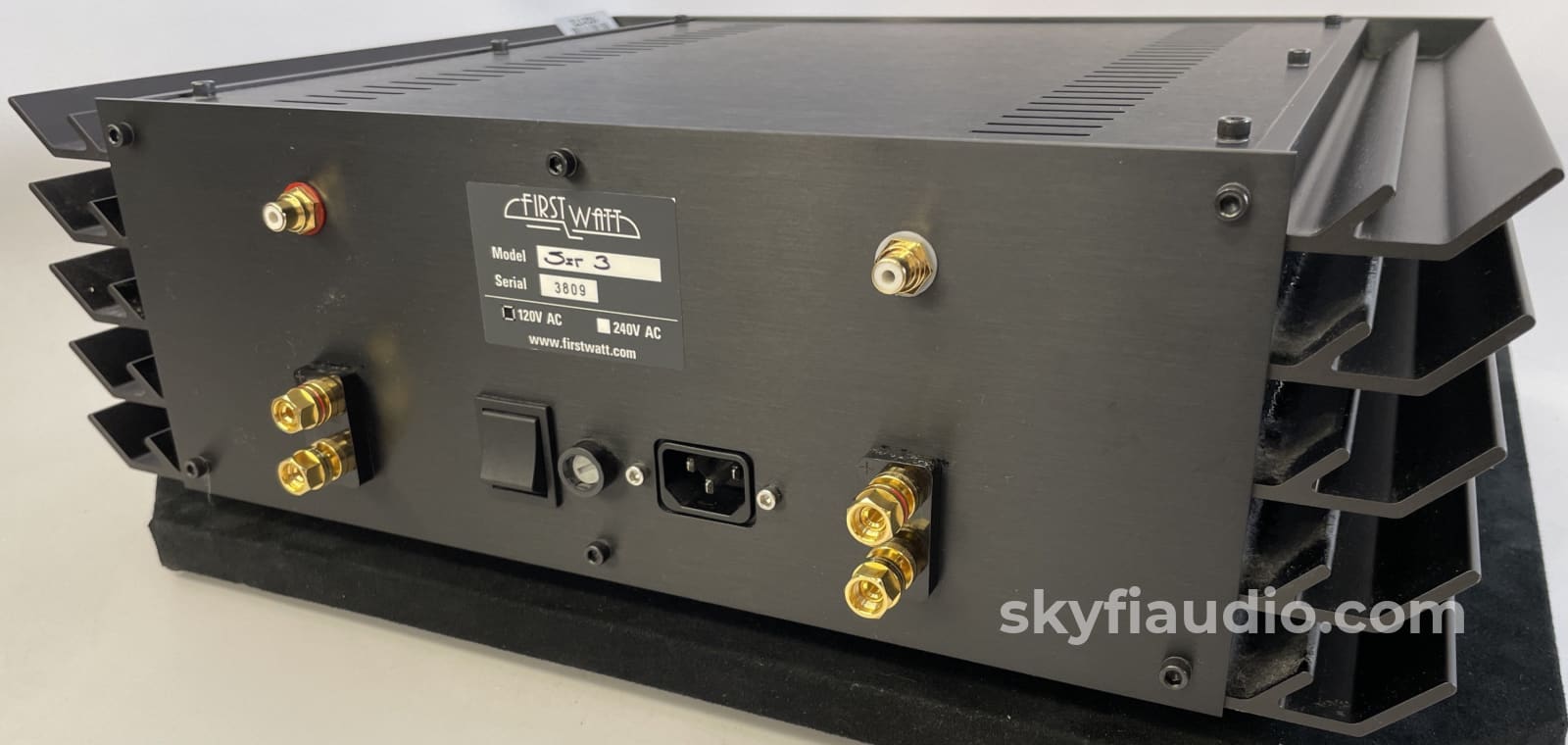
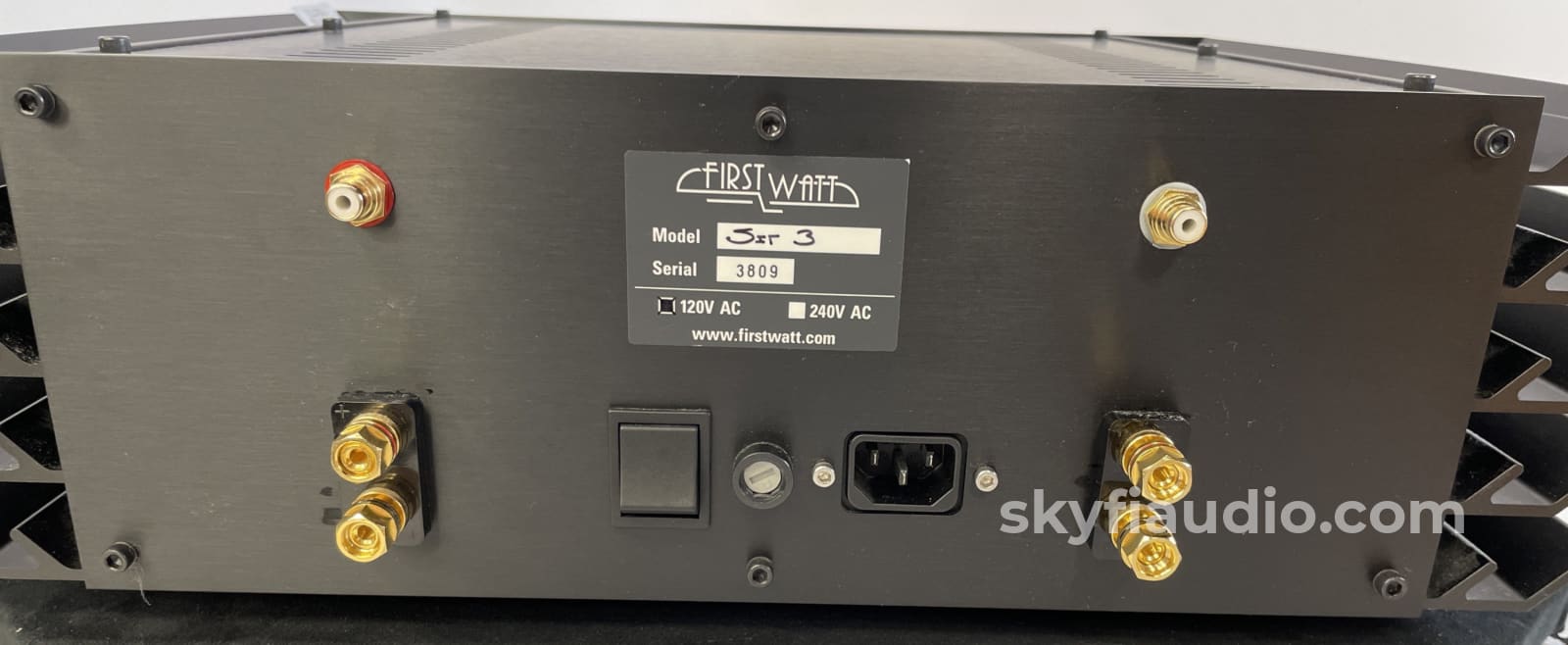
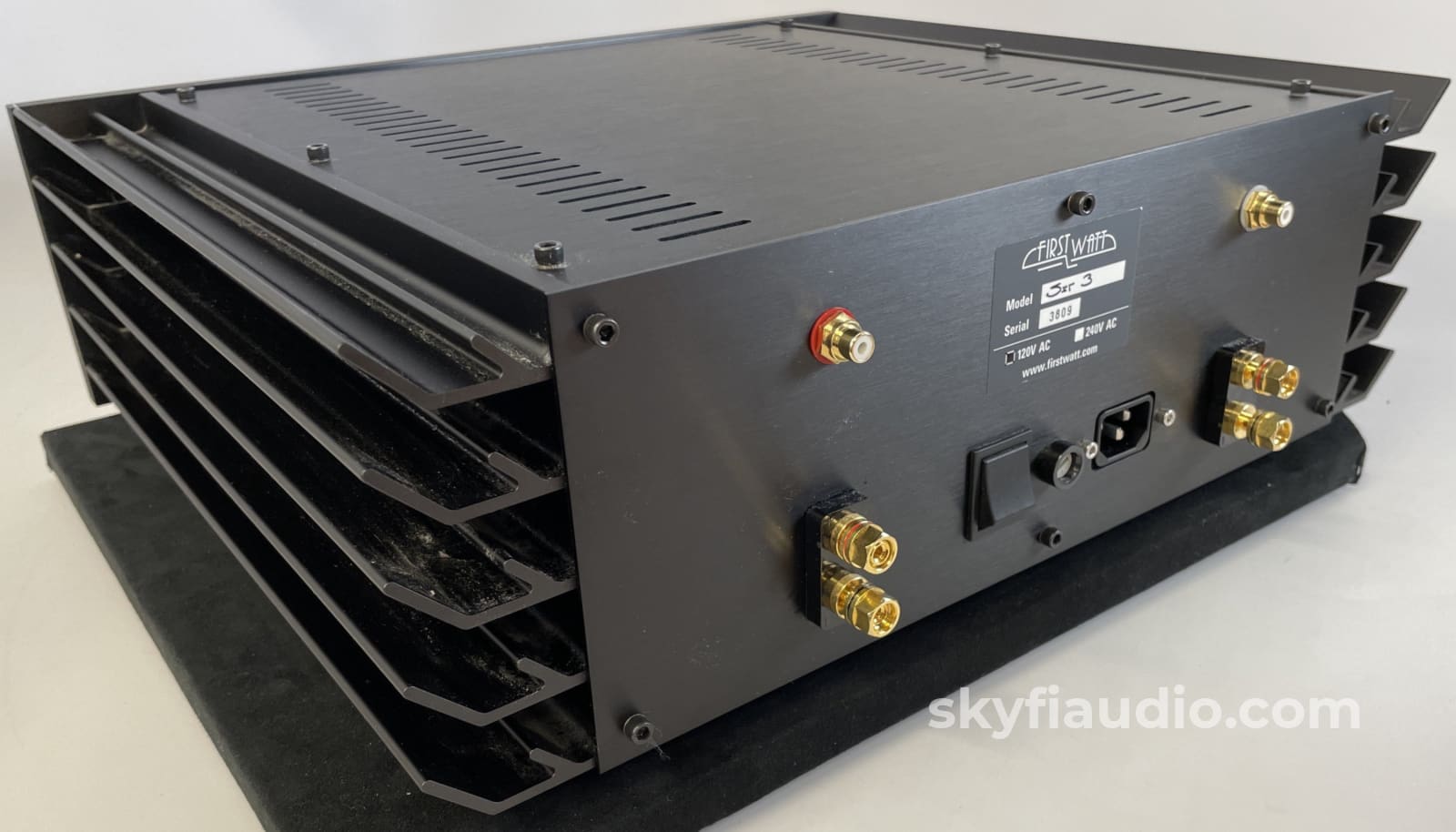
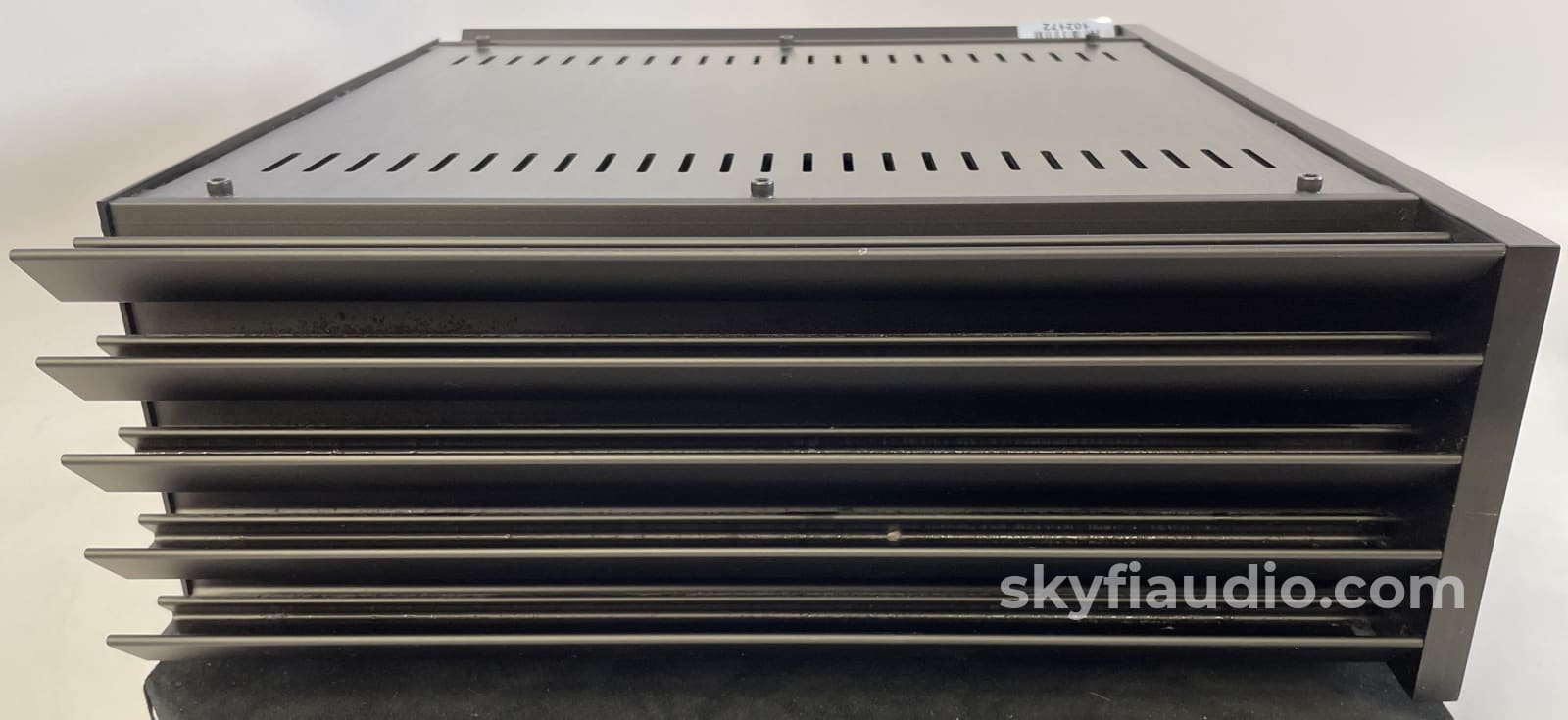
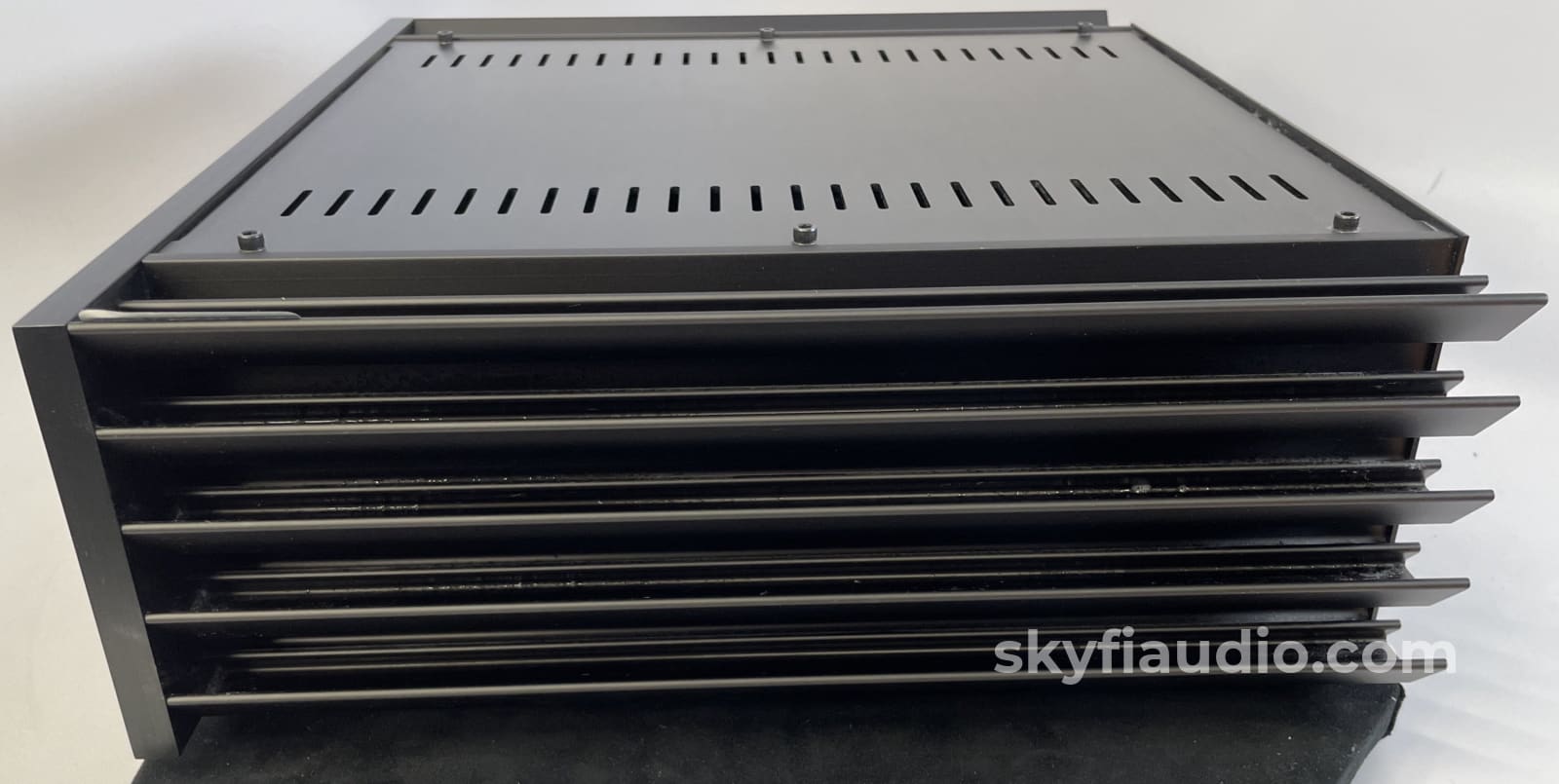

First Watt SIT-3 Class A Amplifier - Like New in Box and Highly Reviewed, 1 of 250 made!
Free Shipping on Most Electronics - Excludes Speakers and Items Requiring Freight - Contiguous U.S. Only
Pickup currently unavailable at SkyFi 479

First Watt SIT-3 Class A Amplifier - Like New in Box and Highly Reviewed, 1 of 250 made!
SkyFi 479
479 South Broad Street
Glen Rock NJ 07452
United States
This is a First Watt SIT-3 class A amplifier, a superb sounding Nelson Pass amplifier. There were only 250 of these amps made by Nelson Pass and they are highly sought after.
Herb Reichert from Stereophile stated that when matched with the right speaker, this is one of the 3 best amplifiers he's ever heard - regardless of price. That's really saying something considering Herb's experience!
Priced at near original MSRP... That's right! Pass only made a few of these and the company that made the special transistors is now defunct. Which means no more will ever be produced.
Looking and sounding like new in original box. Link to Owner's Manual
From Herb's review in Stereophile:
"Besides commissioning his own semiconductors, Nelson Pass is the only mainstream amp designer I know of who writes his own owner's manuals, and does so in an intimate conversational tone. The SIT-3's manual opens with this description:
"The SIT-3 is the very latest example of single-ended/single-stage class-A amplifiers using the SIT (aka VFET) power transistor exclusive to First Watt. It is preceded by the successful SIT-1 and SIT-2 and very much follows their technical philosophy and construction.
"There is a key difference in the new SIT-3, which is that the Static Induction Transistor (SIT) that forms the heart of the circuit is operated in an entirely different mode, what is known as Common Drain Mode. . . .
"The channels of the SIT-1 and SIT-2 consisted of a single SIT operated in Common Source Mode in which (conceptually) the signal comes into the Gate and appears amplified at the Drain pin, but phase inverted. The Source pin is grounded. The amplification with Common Source operation is both voltage and current, and the phase inversion is corrected by reversing the output terminals.
"The SIT-3 goes in another direction, using Common Drain operation, where the signal goes into the Gate pin and comes out the Source pin and the Drain of the FET is grounded (literally attached to ground). This mode only provides current gain—the voltage gain is provided by a high quality voltage step-up transformer which takes the input signal from a preamplifier (or other device) and boosts the voltage. It has no phase inversion.
"In both approaches, the SIT does a good job of amplifying the signal without feedback, but Common Drain operation delivers the amplification with much lower distortion and noise and also a much better damping factor for the loudspeaker.
"The trade-off is the addition of the input transformer, but I think you will find the compromise there is small with respect to the sound quality achieved.
"Common Drain has the same simple spectral distortion character that graced the SIT-1 and SIT-2, and allows similar control of the amplitude and phase of the second harmonic content, but at a much lower distortion figure.[footnote 1] . . .
"If like me you find 18 watts is enough power, then I think you will find that this is a really delightful amplifier . . .
"It has less gain than the amplifiers you are used to [11.5dB vs 25dB+ for most amps—HR], but you can clip the output with about 3 volts. . . .
"The SIT-3 has enough damping factor at 30 to work well with general loudspeakers, but it has been designed around relatively high efficiency speakers, those having 88dB sensitivity or greater."
What other mainstream amp designer would create something this original?"
Summary of the nominal specifications:
Maximum output
18 watts @ 8 ohms
30 watts @ 4 ohms
Input Impedance
200 Kohms
Gain
11.5 dB non-inverting phase
Damping Factor
30
Frequency Response
-.5 dB @ 10 Hz, – 3dB @ 50KHz
Output Noise
50 uV unweighted 20 - 20 Khz
Power consumption
150 watts
Fuse
3AG slow blow type
2.5 Amp for 120VAC
1.25 Amp for 240 VAC
Dimensions
17” W 16” D 6.75” H
Weight
32 lbs
The SkyFi Testing Process for Solid State Amplifiers:
We start with a visual inspection of all internal components to make sure there are no signs of stress or aging. Capacitors are checked for telltale sings of bulging or leaking, resistors are checked for signs of overheating or cracking, and transistors are checked for signs of stress or damage.
We then power up the unit carefully and run a simple 1k sine wave while monitoring the output on an oscilloscope for signs of distortion or noise. Finally, we run the amplifier to its full rated power into the appropriate resistive load provided by our Sencore amplifier tester. If there is an issue, it will usually be noticeable at this point. If everything reads clean, we will often test for THD (Total Harmonic Distortion) measured by our Keithley distortion meter, and compare it against the original manufacturers specifications. The amplifier then remains powered on to "burn in" on our test bench for a few hours to make sure there are no heat related issues. If there are balanced inputs available they will be also be tested.
Final testing involves pushing actual music thorough the amplifier. We've learned over time that some issues are only noticeable to a trained ear while listening to familiar source material. Our test bench has reference vintage KEF speakers that we're very familiar with which quickly reveal any discrepancies. Some amplifiers will then move into our listening room where they are tested with our in-house reference speakers of choice.
Please click here for detailed specifics regarding our specialized packing process that separates us from the rest.
|
Item |
Included |
|
Original Box |
Yes |
|
Manual |
Online |
|
Remote |
N/A |
|
Cables |
Yes - Power |
|
Physical Condition |
8 |
|
Working Condition |
10 |
Choose options
